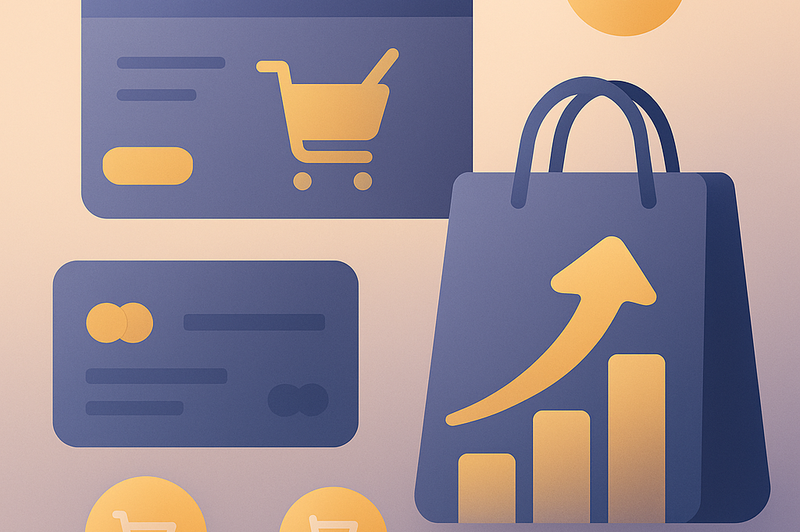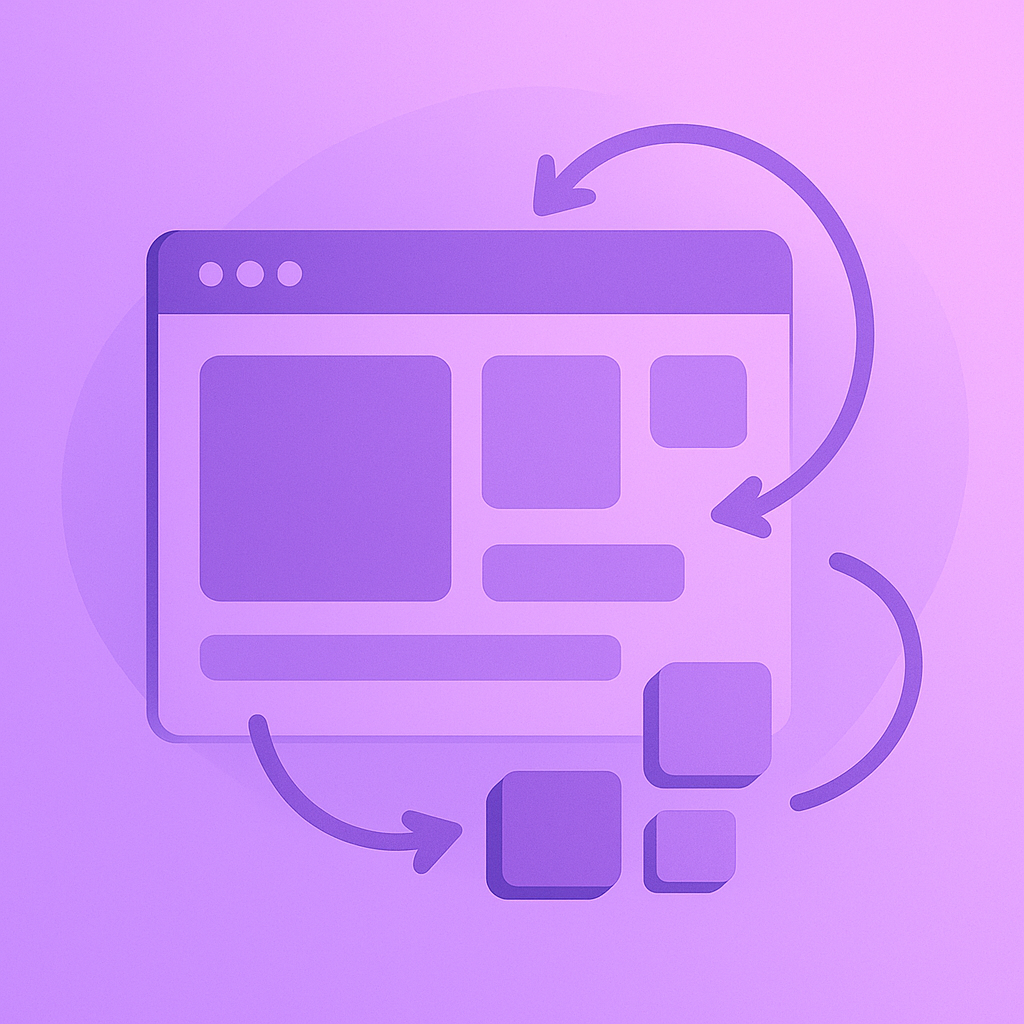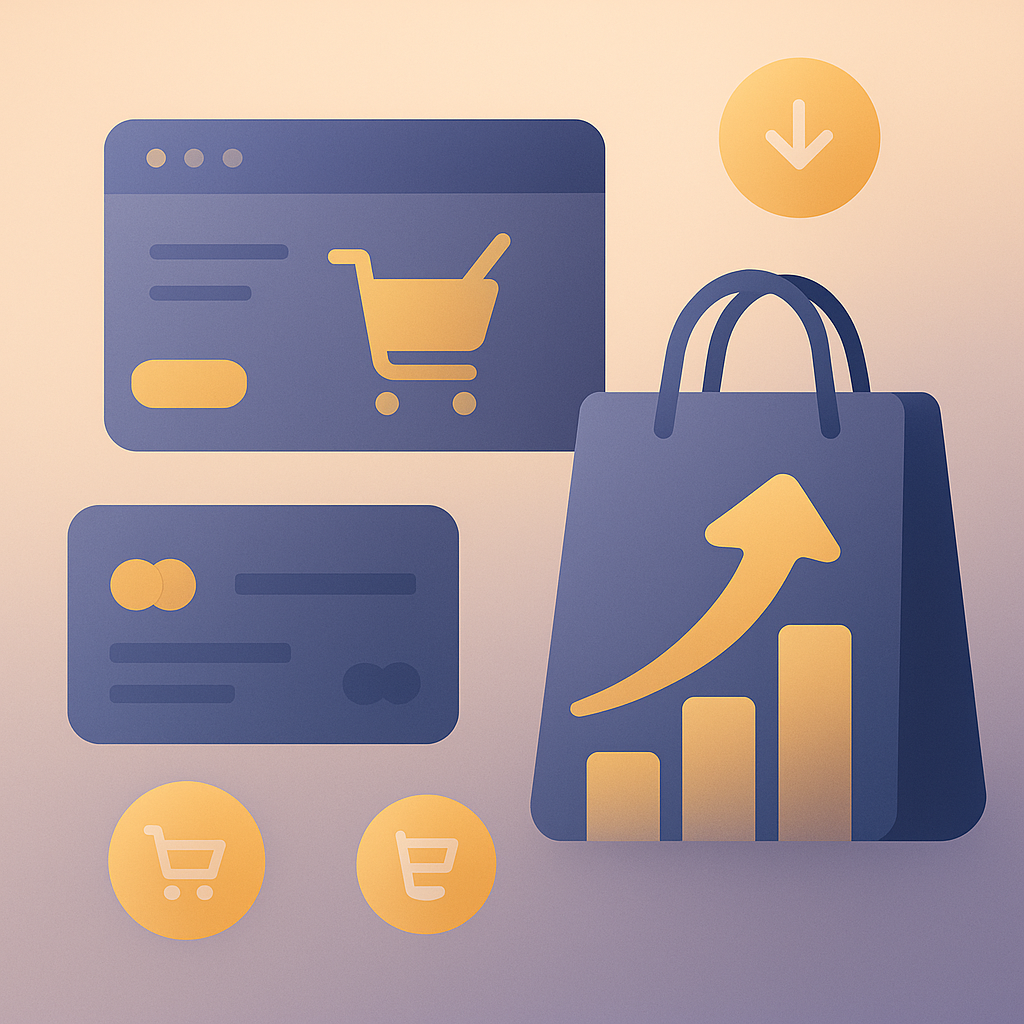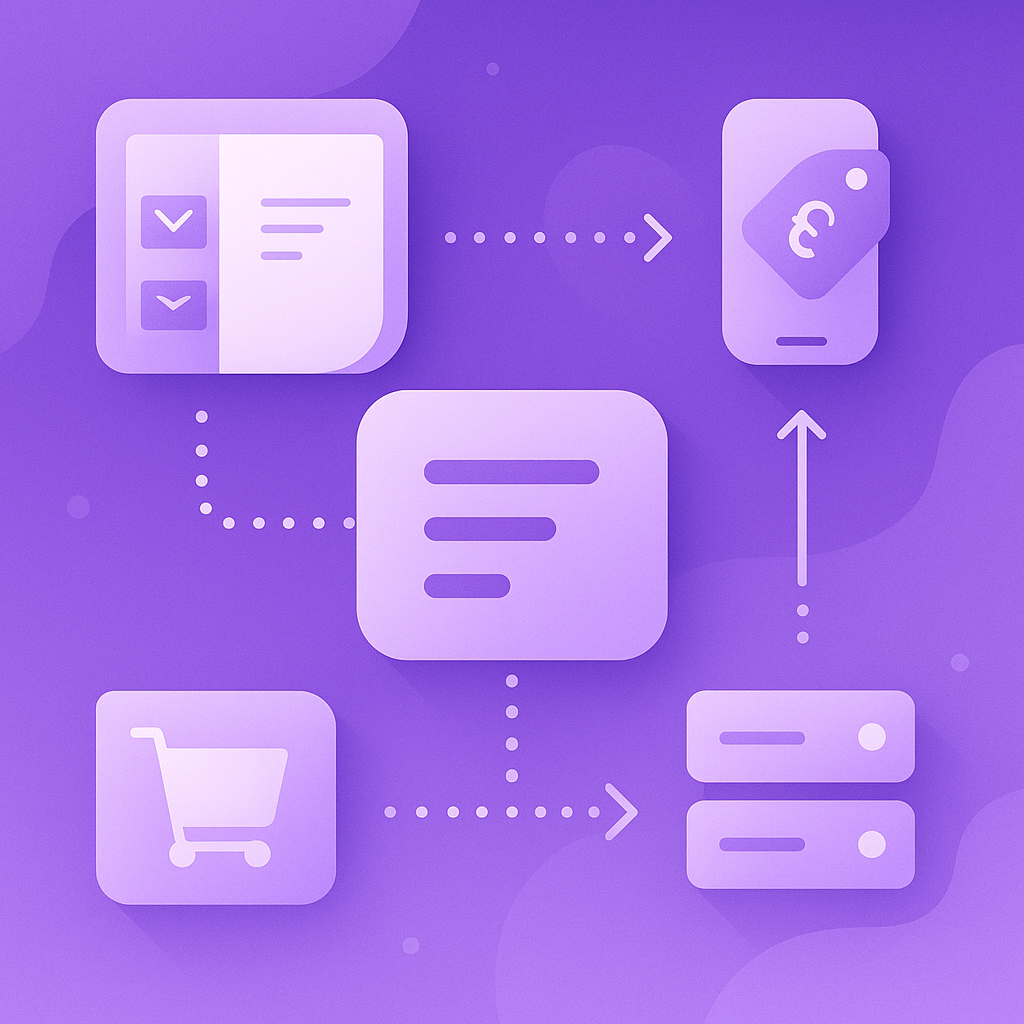The digital commerce landscape has evolved rapidly in the last few years. Platforms that once felt future‑proof can quickly become liabilities when they slow down your team, frustrate shoppers or drain budgets. BrewDog, one of Europe’s largest craft brewers, learned this first‑hand when its Magento site became a bottleneck rather than a growth engine. By migrating to Shopify Plus, the company reduced technical debt, improved conversion rates and freed its team to focus on innovation. The same story plays out across many small and medium‑sized brands today. In 2025, Shopify continues to lead the e‑commerce market because it blends speed, scalability, customisation and affordability in a single ecosystem.
This article explains why Shopify remains the best choice for growing brands in 2025, especially for merchants currently wrestling with Magento, WooCommerce or BigCommerce. It also offers a practical checklist - the five signs your existing platform is holding you back - and outlines how Wolfdev can help you migrate smoothly to Shopify.
What’s New in Shopify 2025?
Shopify invests heavily in product development: it spent about US$1.7 billion on research and development in 2023 and releases hundreds of updates every year. The 2025 “Horizon” edition introduced three innovations that illustrate the platform’s pace of change:
-
Horizon theme & block‑based framework – Shopify’s new theme architecture uses nested blocks and reusable content modules, allowing merchants to build flexible storefronts without heavy custom coding. The new themes have delivered 12 % higher add‑to‑cart rates and 7.5 - 30 % lifts in checkout conversions while saving merchants US$5k–$7k per store in design costs.
-
AI Store Builder – This natural‑language builder generates complete storefronts from prompts such as “modern furniture store with a warm, earthy palette”. It cuts store setup time by up to 50 % and reduces development costs by 10–12 %. Auto‑generated meta tags, alt text and semantic markup ensure sites are SEO‑friendly and accessible from the start.
-
One‑Page Checkout – By consolidating cart summary, shipping, billing and payment fields into a single responsive page, Shopify reduces friction. Early tests show an average 7.5 % uplift in checkout conversions and an up‑to‑12 % reduction in multi‑step abandonment. Merchants can reorder fields, customise call‑to‑action buttons and track analytics easily..
Beyond these features, Shopify has integrated generative AI throughout its stack. Shopify Sidekick acts as a virtual assistant that automates repetitive tasks and generates content; early adopters report 40–60 % time savings on manual work. Shopify Magic offers AI‑driven product descriptions and marketing copy, while Shopify Functions lets developers customise backend logic—such as discounts or shipping rules—without touching fragile theme files.
Market‑Leading Checkout & Performance
Checkout is where revenue is won or lost. Shopify’s checkout is widely recognised as the highest converting on the market—outperforming competitors by up to 36 % and by 15.2 % on average. Customisation via the GraphQL Branding API and Shopify Functions allows brands to tailor the look and feel while still benefiting from Shopify’s world‑class performance. In a separate conversion study, the presence of Shop Pay—Shopify’s accelerated checkout—was found to increase lower‑funnel conversion by about 5 % and lift conversion by up to 50 % compared with guest checkout.
Performance isn’t only about conversion rates—it also affects customer experience and search rankings. Mobile traffic accounts for about 72 % of visits to Shopify stores, and 41 % of users say they’ll abandon a site if it loads too slowly. Shopify meets these demands with a global content‑delivery network, edge delivery and auto‑scaling cloud infrastructure. The platform processes over 10 000 checkouts per minute during peak events and handled US$9.3 billion in Black Friday/Cyber Monday sales in 2023. With 99.99 % uptime and Level 1 PCI DSS compliance built in, merchants don’t have to worry about infrastructure or security.
Affordability and Total Cost of Ownership
Shopify’s subscription pricing often appears higher than open‑source platforms such as WooCommerce, but when you factor in hosting, maintenance, security and developer costs, the total cost of ownership (TCO) tells a different story. A 2024 independent study commissioned by Shopify found that its TCO is 33 % better on average than major competitors—and up to 36 % better. The same study reported that Shopify’s platform fees are 23 % lower, its operating costs are 19 % lower and its implementation costs are 33 % lower than those of BigCommerce, Adobe Commerce (Magento) and WooCommerce. Shopify’s overall conversion rate also outpaces competing platforms by up to 36 %.
Comparative research echoes these findings. A separate TCO analysis found that costs are 57 % higher on WooCommerce than Shopify and that Shopify checkout converts 17 % better. BigCommerce users face 45 % higher costs, 12 % lower checkout conversions, 32 % higher platform fees and 88 % higher implementation costs compared with Shopify users. Even for brands already running on Magento, migrating to Shopify tends to reduce TCO by around 38 % while increasing revenue through higher conversion rates.
Shopify’s lower cost base comes from its fully hosted architecture. There’s no need to manage servers, install security patches or pay for upgrades: automatic updates and patches are included. Shopify also bundles a free SSL certificate, fraud analysis and PCI‑DSS compliance, whereas Magento and WooCommerce place that burden on merchants. This hands‑off model frees up the budget to invest in growth initiatives rather than firefighting.
Flexibility and Ecosystem
Growing brands need flexibility—both to create unique shopping experiences and to integrate with existing systems. Shopify achieves this through a composable architecture and a vast ecosystem:
-
App Marketplace – Shopify curates over 8 000 apps covering email marketing, loyalty, subscriptions, SEO, ERP integrations and more. Apps install with a click, and merchants can switch them on and off as needed. By contrast, Magento’s marketplace has roughly 4 000 extensions and often requires custom development and vetting for compatibility.
-
Theme & Design Options – Shopify offers more than 70 themes (including 12 free ones) that are mobile‑responsive and easily customised; Magento only provides 11 paid themes. Shopify’s drag‑and‑drop editor and built‑in CMS allow non‑technical staff to tweak layouts, colours and typography without code.
-
Developer Tools – For advanced customisation, Shopify Functions and the Hydrogen/Oxygen stack allow developers to write custom code in languages that compile to WebAssembly and deploy it via the Shopify CLI. This enables headless commerce and deep integrations without sacrificing performance.
-
International & B2B Capabilities – With Shopify Markets and Markets Pro, merchants can sell in multiple currencies and languages from a single dashboard, complete with tax and duty localisation. This is crucial as global e‑commerce is projected to reach US$4.8 trillion by 2025 and Shopify already controls 10.3 % of the global market (nearly 29 % in the U.S.).
-
Compliance & Security – Shopify provides PCI‑DSS Level 1 compliance, SSL encryption and fraud analysis out of the box. Magento requires merchants to manage compliance themselves unless they use the cloud edition. WooCommerce relies on WordPress, which can incur hidden security and maintenance costs.
Five Signs Your Platform Is Failing You
BrewDog’s move away from Magento highlights common pain points that many growing brands experience. If you’re still on Magento, WooCommerce or BigCommerce, use the checklist below to assess whether your platform is holding you back:
If any of these signs resonate with your business, it may be time to consider a move. Platforms should be growth accelerators, not anchors.
Why Shopify Wins for Small‑ and Mid‑Sized Brands
While Shopify can power enterprise brands like Staples and Allbirds, it shines brightest for small and mid‑sized businesses seeking predictable costs and rapid growth. Several factors make Shopify an ideal fit:
-
Fast setup and ease of use – Shopify’s drag‑and‑drop editor, intuitive admin and guided onboarding make it accessible for non‑technical users. You don’t need a full‑time developer to manage day‑to‑day operations; your marketing team can run with it.
-
Predictable pricing – Shopify offers several tiers tailored to different stages of growth. The Basic plan is designed for solo entrepreneurs and, in the UK, starts at £19 per month when billed yearly. Higher tiers such as Grow and Advanced add more staff accounts, inventory locations and advanced reporting. For larger brands, Shopify Plus provides enterprise‑grade features and still delivers lower TCO compared with competitors.
-
Built‑in security and compliance – SSL certificates, fraud protection and PCI‑DSS compliance come standard. Your team doesn’t have to worry about patching servers or meeting regulatory requirements.
-
Mobile‑first design and conversion – With mobile traffic dominating, Shopify’s themes are responsive by default, and its checkout is optimised for mobile conversions. Features like one‑page checkout and Shop Pay shorten purchase paths and lift conversions.
-
Extensibility without technical debt – The app marketplace, Hydrogen/Oxygen framework and Shopify Functions allow you to extend functionality or go headless without incurring the maintenance burden typical of open‑source platforms. This means you can start simple and scale complexity only when you need it.
How Wolfdev Can Help You Migrate
Migrating platforms can feel intimidating, especially if you’ve customised your current store heavily. Wolfdev has helped numerous merchants transition from Magento, WooCommerce and BigCommerce to Shopify. Our migration process covers:
-
Audit and business case – We evaluate your current platform’s TCO, performance and feature gaps. Using hard data—such as the TCO and conversion statistics cited above—we build a business case that resonates with stakeholders.
-
Data migration – We safely export products, customers, orders and content, preserving SEO value through careful URL redirects and metadata mapping. Our team ensures passwords and customer histories are handled correctly.
-
Design & UX – Migration is an opportunity to refresh your storefront. We use Shopify’s flexible themes and the Horizon framework to create a responsive, conversion‑focused design tailored to your brand. For B2B sellers, we incorporate Shopify’s native B2B features such as volume pricing and custom buyer portals.
-
Custom functionality – Whether you need subscriptions, loyalty programmes or complex checkout logic, we leverage Shopify’s app ecosystem, Functions and API integrations to build the exact experience you need without over‑engineering.
-
Training & optimisation – After launch, Wolfdev trains your team to use Shopify’s admin, analytics and marketing tools effectively. We also provide ongoing support to optimise conversion rates, performance and marketing automation.
Conclusion
In 2025, the gap between modern commerce platforms and legacy systems is wider than ever. Shopify continues to innovate with AI‑driven store creation, performance‑first infrastructure, world‑class checkout and a thriving ecosystem. Its TCO advantage means lower costs and higher conversion rates, while its scalability allows merchants to grow without rebuilding their tech stack.
If your current platform leaves your team firefighting, hinders quick updates, delivers poor customer experiences, drains your budget or makes scaling painful, it’s time to rethink your options. Shopify offers a proven, future‑proof alternative that powers more than five million active stores worldwide and processes billions in annual sales. Partnering with Wolfdev ensures that your migration is strategic, smooth and designed for growth.
Ready to stop fighting your platform and start focusing on your business? Contact Wolfdev today to discuss your migration and discover how Shopify can unlock your brand’s potential.






